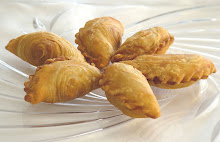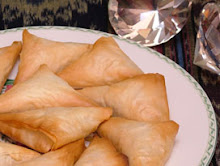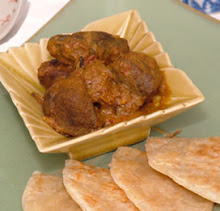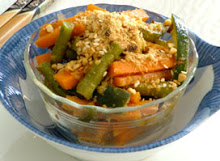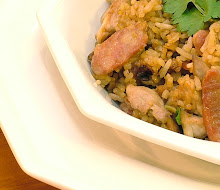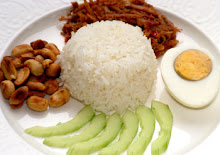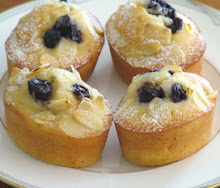Most woks range from 30 cm to 2 metres or more in diameter with a rounded bottom. Woks of 36 cm (14 inches) (suitable for a family of 3 or 4) are the most common, but home woks can be found as small as 20 cm (8") and as large as 91 cm (36"). Smaller woks are typically used for quick cooking techniques at high heat such as stir frying. Large woks over a meter wide are mainly used by restaurants or community kitchens for cooking rice.
They are usually made from carbon steel and cast iron. Although the latter was the most common type used in the past, cooks tend to be divided on whether carbon steel or cast iron woks are superior.
Currently, carbon steel is the most widely used material. Steel woks are usually inexpensive relatively light in weight, have quick heat conduction, and reasonable durability. However, carbon steel woks are more difficult to season and the carbonized season is easily removed in newer woks, both making food more prone to sticking to the wok.
The lowest quality woks tend to be single ply and stamped straight from a piece of steel. These woks have a higher tendency to deform and misshape. Cooking with them is also more difficult and precarious since they often have "hot spots" due to uneven heat distribution. Higher quality woks are almost always "hand hammered" and made of two sheets of carbon steel which are formed into shape by "ring-forming" or hand forging. The real purpose of hand hammering is to create small ridges or dimples along the sides of the wok. These ridges are used in the frying technique of the chef.
Two types of cast iron woks can be found in the market. Chinese cast iron woks are thin (~3 mm) and weigh about the same as a carbon steel wok of similar size, while western cast iron woks tend to be thick (~9 mm), tend to be heavy, and require very long heating times. Cast iron woks are superior to carbon steel woks in heat retention and uniform heat distribution. They also form a more stable carbonized layer of seasoning which makes it less prone to food sticking on the pan. However, both types of cast iron wok also have some disadvantages compared to carbon steel woks. Chinese-style cast iron woks, although quicker in heating and relatively light, are relatively fragile and are prone to shattering if dropped or mishandled. Western-type cast iron woks are slow-heating and slow-cooling, which makes temperature control more difficult. Furthermore, heavy western cast iron makes the tossing action required in stir-frying difficult for smaller chefs.
Non sticksteel woks are common in the western market. These are non popular with professionals. Xylan coated woks are slightly more robust, but still cannot be used for very high heat cooking. Less commonly found are clad woks, which sandwich a thick layer of aluminum or copper between two sheets of stainless steel. These woks perform extremely well but are often quite expensive, quite heavy and usually cook no better than carbon steel or cast iron woks.
The main advantage of the wok beyond its constructed material is its curved concave shape. The shape produces a small, hot area at the bottom which allows some of the food to be seared by intense heat while using relatively little fuel. The large sloped sides also make it easier for chefs to employ the tossing cooking technique on solid and thick liquid food with less spillage and a greater margin of safety. Curved sides also allows a person to cook without having to "chase the food around the pan" since bite-sized or finely chopped stir-fry ingredients usually tumble back to the center of the wok when agitated.
The curve also provides a larger usable cooking surface versus western-styled pots and pans, which typically have vertical edges. This allows large pieces of food seared at the bottom of the wok to be pushed up the gently sloped sides to continue cooking at a slower rate. While this occurs another ingredient for the same dish needing high heat is being cooked at the bottom. The pointed bottom also allows even small amounts of oil to pool. As such large food items can be shallow fried, while finely chopped ingredients like garlic or ginger can be essentially deep-fried in both cases with very small amount of cooking oil.
- SERI KAYA 'raison d'etre'
- We are based in Newington, Homebush and our aim is to serve the local community with our culinary efforts by bringing variety to the tastebuds of our neighbours. Our passion for authentic Malaysian food, has fueled our desire to create many delicious dishes that bring back memories and tastes of 'just the way Mother used to cook them' and be true to those hawker stalls that used to ply the streets. Springing from this source of inspiration we plan to tease your palate with food that is not normally on mainstream menus.
Party Orders
ASIAN
Sushi platter(small)______ $30 for 30 pieces
Rice paper rolls (small) ___$30 for 20 pieces
Satay chicken __________$1.20 per skewer
Thai fish cakes _________ $1 per piece
Curry puffs_____________$1 a puff
Spring rolls ____________$1 per piece
Top Hats * ____________ $1 per piece
Tom Tom ** ___________ $1 per piece
Peking duck $2 per piece
(w/pancake wrap)
WESTERN
Bruschetta (tomato and basil) __$1.20 per piece
Mini quiche (Quiche Lorraine)__ $1 per piece
Melon balls with proscuitto ____$1 per piece
Dips - spinach and sour cream
- borlotti beans
- Mexican
dips come with :
totillas/ pitta bread $15 ea (for 10 -15 people)
PLATTERS
Mixed antipasto (for 10 -12 people) ________ $100
Fruit platter (seasonal) (8 - 10 people)_______$35
Cheese platter ( w/crackers) (8 - 10 people) __$40
Gourmet cheese (w/crackers) (8 - 10 people) _$70
Sweet (mini muffins, friands, (8 - 10 people) __$30
cup cakes, biscuits
Cakes on request :
(eg bluberry cake, banana cake, cheesecake)
*Top Hats or Pie Tee are a delicious
combination of finely julienned
vegetables topped with meat or prawns
in a dainty crispy case shaped like a
top hat.
**Tom Toms are a meat and vegetable
filling wrapped in crispy wanton skin.
We will deliver free if the order is above $150 within Sydney.
Sushi platter(small)______ $30 for 30 pieces
Rice paper rolls (small) ___$30 for 20 pieces
Satay chicken __________$1.20 per skewer
Thai fish cakes _________ $1 per piece
Curry puffs_____________$1 a puff
Spring rolls ____________$1 per piece
Top Hats * ____________ $1 per piece
Tom Tom ** ___________ $1 per piece
Peking duck $2 per piece
(w/pancake wrap)
WESTERN
Bruschetta (tomato and basil) __$1.20 per piece
Mini quiche (Quiche Lorraine)__ $1 per piece
Melon balls with proscuitto ____$1 per piece
Dips - spinach and sour cream
- borlotti beans
- Mexican
dips come with :
totillas/ pitta bread $15 ea (for 10 -15 people)
PLATTERS
Mixed antipasto (for 10 -12 people) ________ $100
Fruit platter (seasonal) (8 - 10 people)_______$35
Cheese platter ( w/crackers) (8 - 10 people) __$40
Gourmet cheese (w/crackers) (8 - 10 people) _$70
Sweet (mini muffins, friands, (8 - 10 people) __$30
cup cakes, biscuits
Cakes on request :
(eg bluberry cake, banana cake, cheesecake)
*Top Hats or Pie Tee are a delicious
combination of finely julienned
vegetables topped with meat or prawns
in a dainty crispy case shaped like a
top hat.
**Tom Toms are a meat and vegetable
filling wrapped in crispy wanton skin.
We will deliver free if the order is above $150 within Sydney.
Dinner Menu
Italian
Starters
Antipasto
Dips
Mains
Saltimbocca alla Romama
(Chicken escalopes with ham and sage)
Pollo Caciatore
(Braised chicken with special tomato sauce)
Spaghetti with meatballs
Lasagne Verdura/Carne
(Layered Pasta sheets with Italian sauce)
Penne Putanesca
(Pasta with a spicy sauce)
Malaysian
Starters
Fried Wanton
Curry Puffs
Chicken Satay
Wraps
Spring Rolls
Samosas
Tom Toms
(meat and vegetablefilling wrapped in crispy wanton skin)
Pie Tee
(finely julienned vegetables topped
with meat/prawns in a dainty crispy
case shaped like a top hat).
Murtabak
Thai Fish Cakes
Peking Duck (with wraps)
Sang Chow Bau
Gow Gee
Mains
Rendang
Chicken or Lamb Curry
Satay with compressed rice
Gado Gado
Acar
Ayam Percik
Claypot Chicken Rice
BBQ meats – Roast Pork, Char Siu, Roast Chicken
Mee Siam
Fried noodles/Fried Vermicelli
Boiled Rice/Fried Rice
Roti Paratha
Western
Starters
Dips – Spinach, Mexican, Bean
Vol-au-Vents
Spinach Triangles
Pikelets
Mains
Roast leg of Lamb with roast vegetables and potatoes
Roast Chicken
Quiche Lorraine
Shepherds Pie
Turkey and Leek Flan
Meat Pies
Casseroles
Starters
Antipasto
Dips
Mains
Saltimbocca alla Romama
(Chicken escalopes with ham and sage)
Pollo Caciatore
(Braised chicken with special tomato sauce)
Spaghetti with meatballs
Lasagne Verdura/Carne
(Layered Pasta sheets with Italian sauce)
Penne Putanesca
(Pasta with a spicy sauce)
Malaysian
Starters
Fried Wanton
Curry Puffs
Chicken Satay
Wraps
Spring Rolls
Samosas
Tom Toms
(meat and vegetablefilling wrapped in crispy wanton skin)
Pie Tee
(finely julienned vegetables topped
with meat/prawns in a dainty crispy
case shaped like a top hat).
Murtabak
Thai Fish Cakes
Peking Duck (with wraps)
Sang Chow Bau
Gow Gee
Mains
Rendang
Chicken or Lamb Curry
Satay with compressed rice
Gado Gado
Acar
Ayam Percik
Claypot Chicken Rice
BBQ meats – Roast Pork, Char Siu, Roast Chicken
Mee Siam
Fried noodles/Fried Vermicelli
Boiled Rice/Fried Rice
Roti Paratha
Western
Starters
Dips – Spinach, Mexican, Bean
Vol-au-Vents
Spinach Triangles
Pikelets
Mains
Roast leg of Lamb with roast vegetables and potatoes
Roast Chicken
Quiche Lorraine
Shepherds Pie
Turkey and Leek Flan
Meat Pies
Casseroles
SPECIAL EVENTS
We can cater for special events like Full Moon Celebrations, Birthdays, Maternity Confinement and Baby Showers.
Some of our dishes we recommend include :
Full Moon red eggs
Nasi Kunyit
Chicken curry
Roastpork Trotters in black vinegar
Chicken with wine and ginger
Every order is specially designed for you so call us and find out more.
Some of our dishes we recommend include :
Full Moon red eggs
Nasi Kunyit
Chicken curry
Roastpork Trotters in black vinegar
Chicken with wine and ginger
Every order is specially designed for you so call us and find out more.
Sunday, October 28, 2007
Subscribe to:
Posts (Atom)

